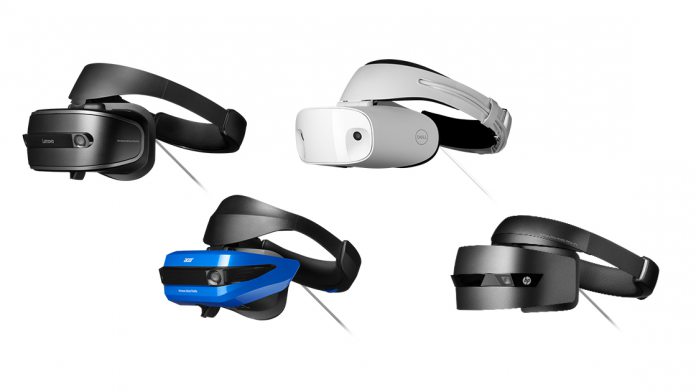Kipman, the man behind HoloLens, says the augmented reality headset was the start of Microsoft plans. However, the company now wants Windows Mixed Reality to be a platform embraced by developers, partners, and consumers. In his post today, Kipman discusses the upcoming hardware that will be the first to push the mixed reality vision. He adds the company will present its plans at IFA this week. For Microsoft, OEM partners are an essential cog in the company’s engine. While Surface products are excellent, Microsoft remains foremost a supplier of software and services. OEM’s are given the task of creating compelling hardware to showcase those services. It is a model Microsoft has been successfully implementing since the PC boom. https://www.youtube.com/watch?v=QK_fOFDHj0g That model has allowed the company to build relations with numerous major hardware companies. Most of those (Dell, Lenovo, HP, Acer, and ASUS) are already on board. Hardware from these companies will initiate the first wave of Windows Mixed Reality. As we already know, Microsoft is pitching its VR, MR, and AR solution as the affordable choice, without having to compromise on performance and features. Current leading VR headsets like Oculus Rift and the HTC Vive cost around $1,000 and require PC hardware worth double. Microsoft has been clear that its OEM created VR headsets will be affordable. Equally, Windows Mixed Reality will allow the headsets to be used on PCs with modest specs. It is worth noting that affordable does not mean cheap. For example, the Dell Visor will cost $359.99 at launch, or $459.99 with two controllers. That is not pocket money, but is still significantly cheaper than similar alternatives. Importantly, there is a good chance the headset will function with your current PC hardware. In his post today, Kipman discussed the key selling points of Windows Mixed Reality: “Easy setup Existing high-end VR headsets with external cameras are cumbersome to set up. For more people to experience VR one of the barriers that needed to be removed was the need for external markers. That is why the Windows Mixed Reality headsets coming this holiday will be the first to deliver VR experiences with built-in sensors to track your physical position without requiring you to purchase and install external sensors in your room. You don’t need to spend hours to set up a single room in your house with a large play space, just plug and play. This also means these experiences are portable – whether you are traveling for work or visiting friends and family, just pack your PC and headset and you can share the magic of mixed reality. Affordable gear A variety of Windows Mixed Reality headsets and motion controllers will be available this holiday from HP, Lenovo, Dell, and Acer. Headset and motion controller bundles will start as low as $399 and will be compatible with exciting and new PC models starting at $499. Along with our partners, we are committed to making mixed reality affordable. Range of hardware choices When it comes to deciding which hardware is right for you, we know that our customers value choice in brand, industrial design, and features. That is why we created Windows Mixed Reality as a platform for you to enjoy experiences across multiple devices that meet your mobility and performance needs. We have talked a lot about the headsets and motion controllers, now let’s talk about PCs that will be compatible with Windows Mixed Reality. This holiday, customers can choose the PC that’s right for them – Windows Mixed Reality PCs and Windows Mixed Reality Ultra PCs. Here is some context on what makes the two experiences different: Windows Mixed Reality PCs: will consist of desktops and laptops with integrated graphics. When plugged into these devices, our immersive headsets will run at 60 frames per second. Windows Mixed Reality Ultra PCs: will consist of desktops and laptops with discrete graphics. When plugged into these devices, our immersive headsets will run at 90 frames per second. Both configurations will support today’s immersive video and gaming experiences such as traveling to a new country, exploring space,?swimming with dolphins, or shooting zombies. Use your Windows Mixed Reality motion controllers to enjoy a world of discovery and imagination this holiday.”
Content
For the virtual/mixed reality market to take off, there is no doubt the content needs to be in place. Indeed, this is the reason Microsoft had delayed the HoloLens until 2019. The company, including Kipman, has been vocal in saying it wants to ensure there is enough content in place for its augmented reality headset. VR content has been growing and improving and there is a feeling the market is about to boom. Microsoft says it has lined up numerous partners to bring content to the Windows Store. For example, the companies own 343 Industries is working on bringing Halo to Windows Mixed Reality. As mentioned, Kipman also confirmed a partnership with Steam. This means content from the streaming service will be on Windows Mixed Reality. We have seen Microsoft enter some markets late, mobile being the most notable. This time the company is being aggressive at the start of a potential new wave of technology.




